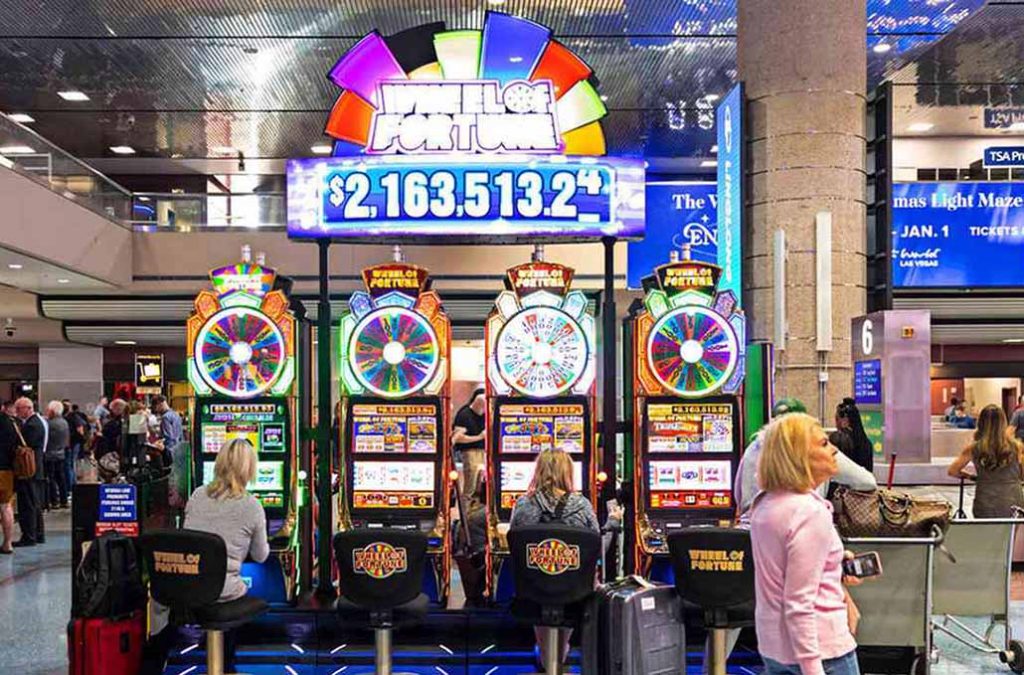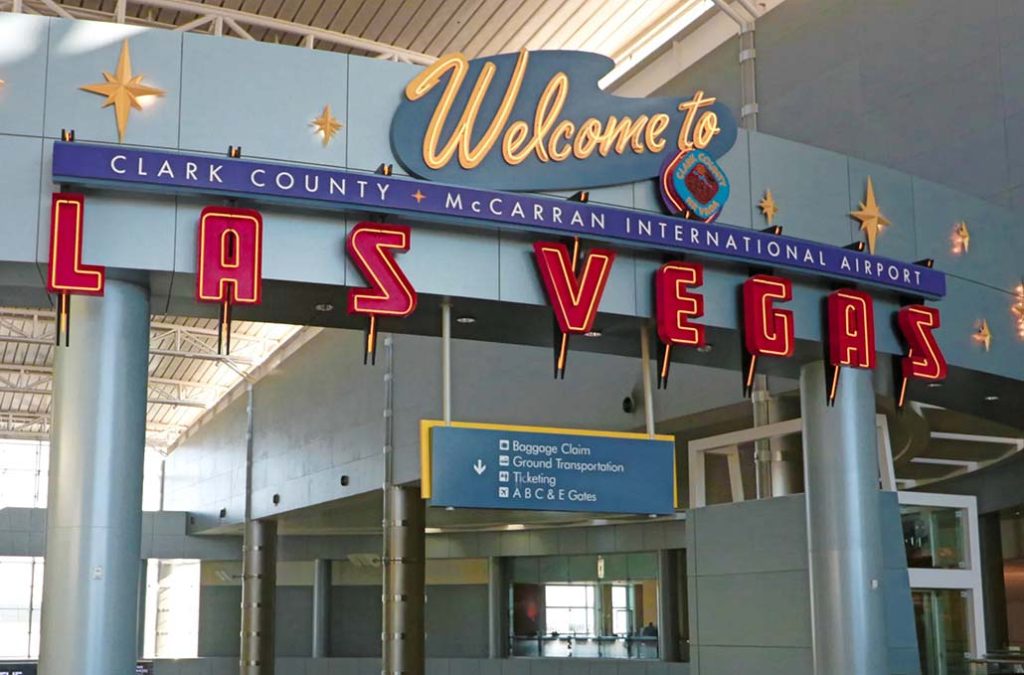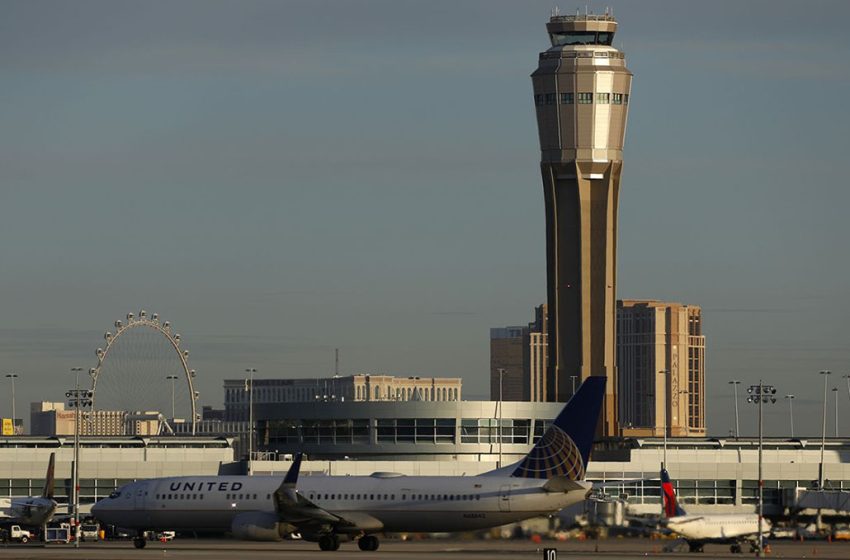Las Vegas, the “city that never sleeps”, not only attracts global travelers with its entertainment charm, but also becomes an important transit point for domestic flights in the United States due to its convenient transportation. Whether it is a connecting flight between the east and west coasts or a transit station to neighboring countries, Las Vegas McCarran International Airport (Harry Reid International Airport) is a popular node.
However, every traveler always faces a common problem when booking air tickets: choose an early flight, a night flight or a red-eye flight? The flight price, comfort, flight stability, security waiting time, and whether it is convenient to connect to transportation at different time periods will directly affect the overall travel experience.
Which one is the most cost-effective? Which one is the most worry-free? Which one is the least likely to be delayed? These questions seem simple, but they often determine whether a journey is smooth or not.
Ⅰ. Early flight: an efficient choice to set off in the morning
1. Why choose an early flight?
Early flights generally refer to flights that take off between 5:00 and 9:00 in the morning. For tourists who want to fully enjoy the whole day trip in Las Vegas, this is undoubtedly the best choice. You can arrive at McCarran International Airport (LAS) before noon, and after checking in, you can directly immerse yourself in the rhythm of the city without missing any exciting moments.
The advantages of early flights are mainly reflected in:
Low probability of delay: The early morning flight is the “first flight” of the aircraft and is not affected by the previous flight.
Relatively affordable fares: Although not the cheapest, they are usually cheaper than flights during prime time (midday to evening).
Fast airport clearance: There are relatively fewer people at security checks in the morning.
2. Riding experience and practical challenges
However, the biggest challenge of early morning flights is getting up early. Especially when departing from some big cities, such as Los Angeles, San Francisco, Chicago or New York, passengers often need to get up at 3 a.m. to prepare for departure. For those who are not used to the early morning rhythm of life, this may lead to a bad mental state throughout the day.
In addition, if you are transiting from Europe or Asia to the United States and then flying to Las Vegas, early flights are almost impossible to achieve unless you choose to stay overnight in the transit point.
3. Recommended airlines and routes
Several major airlines in the United States offer early flights to Las Vegas:
Alaska Airlines: The king of cost-effective flights from the West Coast to Las Vegas, with a high punctuality rate and comfortable seats.
Southwest Airlines: It provides many direct flights during the early morning hours, and free checked baggage is popular among backpackers.
Delta Air Lines: From hubs such as Atlanta and Minneapolis, the early morning flights are well-equipped and the service is stable.
4. Recommended third-party booking platforms
To find early morning flights, it is recommended to use the following platforms:
Google Flights: Supports filtering departure time intervals and intuitive price comparison.
Skyscanner: Strong price comparison function, suitable for budget-sensitive travelers.
Expedia: Can package air tickets and hotels, sometimes providing combination discounts.
Kayak: Has a multi-date comparison function, which is convenient for flexible adjustment of itineraries.
Ⅱ. Night flights: a balanced choice for taking off in the sunset
1. Time definition and applicable groups of night flights
Night flights generally refer to flights that take off between 18:00 and 23:00 in the evening. This type of flight is mostly suitable for travelers who set off after work during the day, especially business people or family tourists with children, who can fly to their destination without affecting their daytime arrangements.

The main advantages of night flights include:
Suitable for office workers/students: depart immediately after work or classes during the day.
High time utilization efficiency: fly at night, and you can check in to the hotel directly after arrival to rest, and start your journey the next day.
Reduce the pressure of airport security: most passengers are concentrated in the peak hours during the day, and night flights are smoother.
2. Potential problems of night flights
However, night flights also face many challenges, especially the high risk of takeoff delays. Once there is a problem with the previous flight, it is easy to “join” the flight at night. In addition, whether there are subways, airport buses or taxis operating after the flight lands is also a factor that needs to be considered.
3. Recommended airlines and routes
United Airlines: Provides direct night flights from San Francisco, Denver and other places, and has a good business class experience.
JetBlue Airways: Advanced entertainment system, high comfort for night flights, and large seat space.
American Airlines: Wide range of routes, can be combined with night flights from multiple cities to LAS
4. Booking suggestions and platform recommendations
Night flights are usually similar to or slightly more expensive than morning flights. It is recommended to book tickets 2-4 weeks in advance. The following platforms are practical:
Hopper: It can predict changes in air ticket prices and is suitable for travelers with strong planning.
Priceline (comparison website): There are “Express Deals”, that is, low-priced tickets without specifying airlines.
Trip.com (Ctrip International Edition): Suitable for Asian travelers, with a friendly interface and support for multi-currency payments.
III. Red-eye flights: a “hard-core” option to save time and accommodation costs
1. Definition and advantages of red-eye flights
The so-called “red-eye flights” usually refer to flights that take off around midnight (23:00 to 5:00 the next day). The flight time just covers the middle of the night, and passengers often arrive at their destination near dawn. This type of flight is suitable for backpackers or frequent business travelers who want to reduce accommodation costs.
The biggest advantages of red-eye flights are three:
Save accommodation costs: Spend a night on the plane and avoid hotel expenses.
Maximize time: Complete work or travel in the same place during the day, and start a new journey the next morning.
The ticket price is usually the lowest: many airlines have discount strategies on red-eye flights.
2. Challenges of the red-eye ride experience
But red-eye flights are not a panacea. Poor sleep quality is its biggest pain point, especially in economy class, where the seats are narrow and the lighting is uncertain, and it is possible to stay awake all night. If you need to start your journey immediately after arrival, your mental state and physical strength may be affected.
In addition, whether you can check in in time after arriving in Las Vegas, whether there are transportation tools at the airport, and whether the city is safe, etc., also need to be evaluated in advance.

3. The main airlines providing red-eye flights
Spirit Airlines: Known for its low prices, it often has ultra-low-priced tickets departing at midnight.
Frontier Airlines: Provides extreme budget routes, suitable for purely price-oriented travelers.
American Airlines / United / Delta: The three major mainstream airlines occasionally have red-eye routes with high service quality.
Red-eye flights to Las Vegas are especially common from major cities in the east or northwest, such as New York, Boston, Miami, and Seattle.
4. Red-eye flight booking skills and platforms
Red-eye tickets can be accurately screened on the following platforms:
Momondo: Especially suitable for finding midnight flights, supporting price trend charts.
Orbitz: With a departure time filter, you can easily lock in red-eye flights.
CheapOair: Focuses on discount flights, and recommends common red-eye flights at special prices.
IV. Comparison of actual experience in different time periods: time, cost, and comfort
1. Time value
Early flight: Most suitable for people who have a full schedule. Depart in the early morning, arrive at noon, and can be used in full on the same day.
Night flight: Suitable for “pressing the line” type of passengers, moderate, neither too early nor too late.
Red-eye: An extreme solution to compress time, but requires a high physical tolerance.
2. Difference in airfare
Based on actual inquiries and past data:
Red-eye flights are generally the cheapest, especially the special tickets offered by low-cost airlines (Spirit, Frontier).
Early flights are slightly lower than prime time, but higher than red-eye flights.
Night flights are the most unstable, with large fluctuations during holidays and weekends, and may be the most expensive during peak season.
3. Comfort
Early flights are the most stable but require getting up early, so people with high requirements for rest may find it difficult to adapt.
Night flights are suitable for people who have daytime arrangements and the experience is relatively balanced.
Red-eye flights are the most physically challenging, especially economy class is not suitable for long flights.
The journey to Las Vegas is not only a choice of destination, but also a rhythm planning. Early flights are like a morning sonata, taking you to start the carnival prelude in the rising sun; night flights are like light jazz in the twilight, allowing you to slowly take your seat in the city lights; and red-eye flights are a rapid transition in the electronic music beat, taking you across the darkness of the night and rushing straight into the feast of light.
Choosing the right time to fly to Las Vegas is not only about the airfare, but also a reflection of your travel style. Different travelers have different answers.

